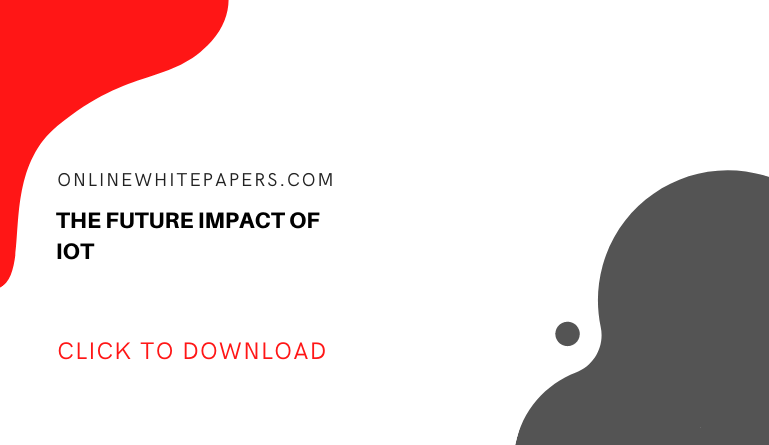Only a few decades after the rise of the internet, we can only acknowledge the many major innovations across the tech world. There was a time we had to rely on huge mainframe computers to carry out even the simplest task of multiplication or division. But today, we have sophisticated computers that can be folded and kept in our purses, or computers that can simply be worn on any part of the body, and even autonomous self-driving cars, smart buildings, and e-monies.
The world has become a global village – a sophisticated high tech one in which technology has helped replace the conventional ways by which we do things.
In just about six years since its inception, the Internet of Things(IoT) has greatly risen to become one of the most important elements in the tech age. By 2025, over 70 billion devices will be connected to IoT.
We are not just talking IoT applications here but a broader view of IoT tools, cloud systems, operating modules, and many more.
It is evident that the Internet of Things is the future.
What is the Internet of Things?
Think intelligence and interlinking of systems, think IoT.
The Internet of Things refers to the process where components such as cloud computing, sensors, and electronic devices are interlinked via a network.
The IoT is composed of the:
- Sensors
- Actuators
- Controller
As earlier mentioned, it is crucial to note that IoT designs go beyond the development of smart IoT apps but into a broad range of IoT tools, cloud systems, operating modules, and many more.
Why the IoT?
Intelligence, speed, and convenience
Picture a world where you can either warm up or cool down your room temperature with just a click on your smartphone when you are just a few miles away from your house.
Now that’s intelligence, speed, and convenience all via the Internet of Things.
How can IoT designs be iterated?
4 Best Designs for IoT Device Iteration
- Double Buffering
- Encryption
- Separate Bootloader
- Update at scale
-
Double Buffering
My very first principle for IoT device iteration is double buffering.
What is double buffering?
Double buffering is a well-applied term in the computer industry. It is used when a device with two A and B, are used to block data in order to complete an older version of that data.
By so doing, the data of the other version will not be seen rather, the updated version.
So, while the user is looking at buffer A, the developer can modify the buffer without the user noticing, irrespective of if the pixel modification is done multiple times. The user gets to notice the change only when the swap of the buffer is made.
Thus, to iterate your IoT device, you could make use of this practice. This can give you that room or flexibility to work on your software as often as you may.
-
Encryption
Remember how we said that the IoT is an intelligent network of devices interlinked without cables? This means the space is wide and therefore open to security breaches.
Therefore, in the iteration of your IoT devices, ensuring maximum security cannot be overemphasized. This brings me to my second best principle for IoT devices, encryption.
Encryption is a digital method of securing information by encoding them or rather, converting information into a secret code that no one would be able to access except one who is authorized.
The information that is converted is known as the plaintext, the encrypted data, ciphertext, and the process, algorithm.
The authorized user is given a key which he or she uses to translate the ciphertext back to plaintext should he or she wishes to access the data.
You, therefore, can apply this method in upgrading your IoT package from the very system of use to the device, tool, or app itself.
-
Separate Bootloader
Now, for my third principle.
What you want to do is to upgrade an existing device, tool, or application, right? That device or application would have a bootloader, X.
(Every device does have a bootloader. The bootloader is the program that is responsible for starting a device. Let me explain better, whenever a device say a smartphone, tab, or a PC is powered on, the program that starts the operating system is called the bootloader).
For you to properly have a successful iteration on your IoT device or application, a separate bootloader, Y would be needed. This is to ensure that the device or application with the X bootloader starts up regardless of the state of the device or application with the bootloader, Y.
-
Update at scale
Here, it is important to have a process and system for managing updates in the field and at scale. A device operation application that can communicate with each device and can identify and group these devices is needed here. These devices could be grouped based on their functionality, or area of deployment.
This is done to aid upgrading, easing the process of updating device features and functions.
Also, this allows you to grade and stagger rollouts which gives you more control over the process and reduces the risk of update failure.
The ability to update devices once they have left the factory is one of IoT’s biggest advantages. Ensuring that your device is designed for this level of iteration does take some upfront work.
Final Thoughts
Summing up, these are four principles I have pen down which I consider the best principle for IoT device iteration.
With the exponential surge in one of the most powerful tools in the tech world today, plunging into the wave could be just your checkmate move.

Leave a Reply
You must be logged in to post a comment.